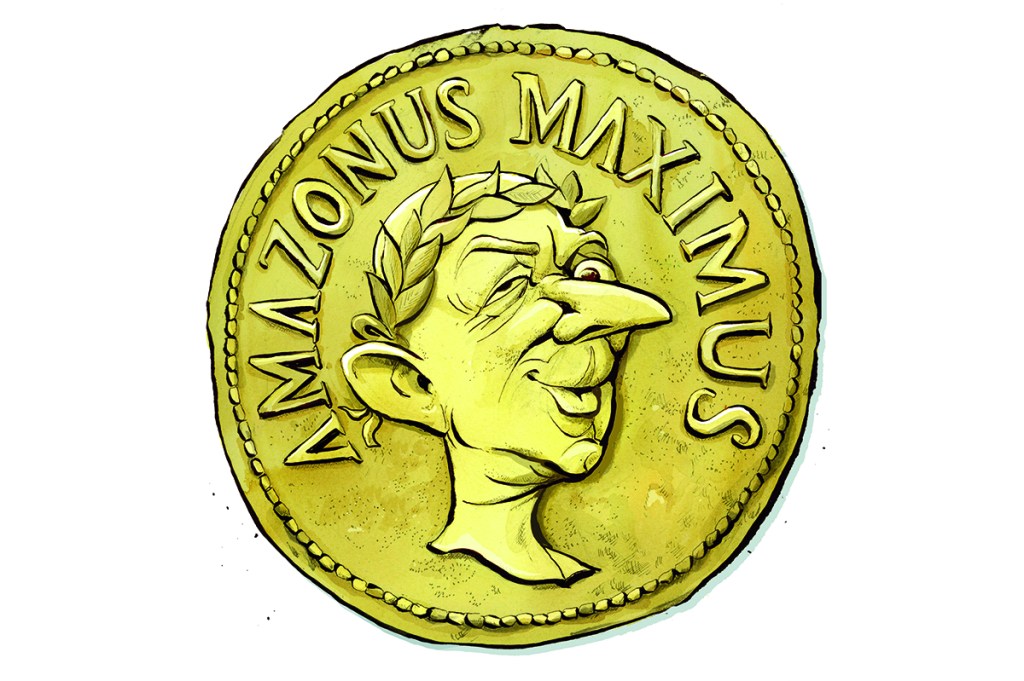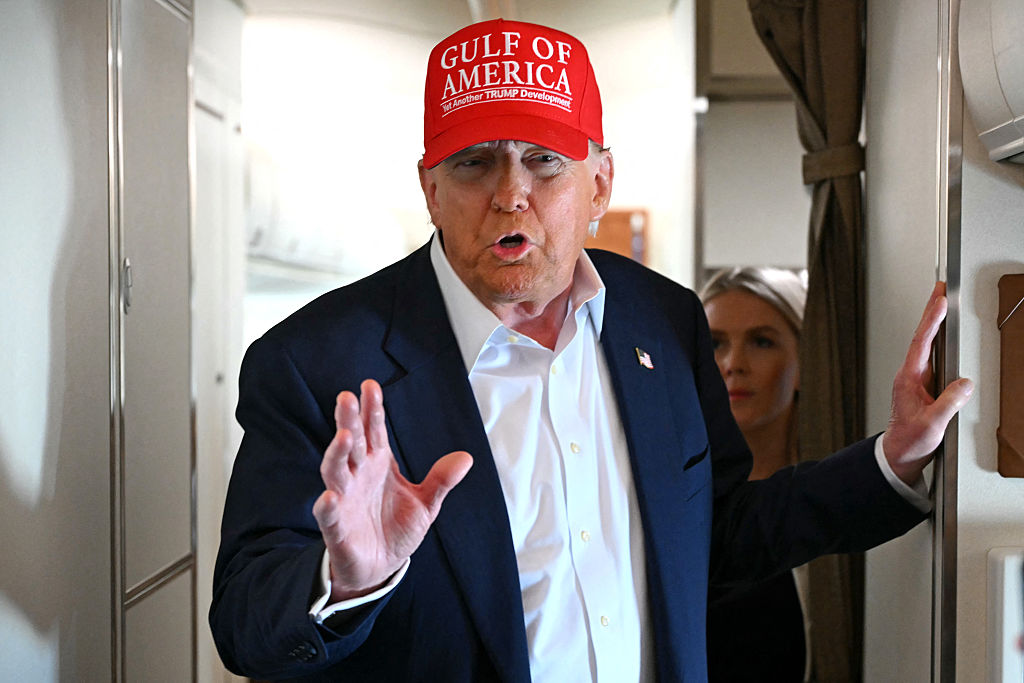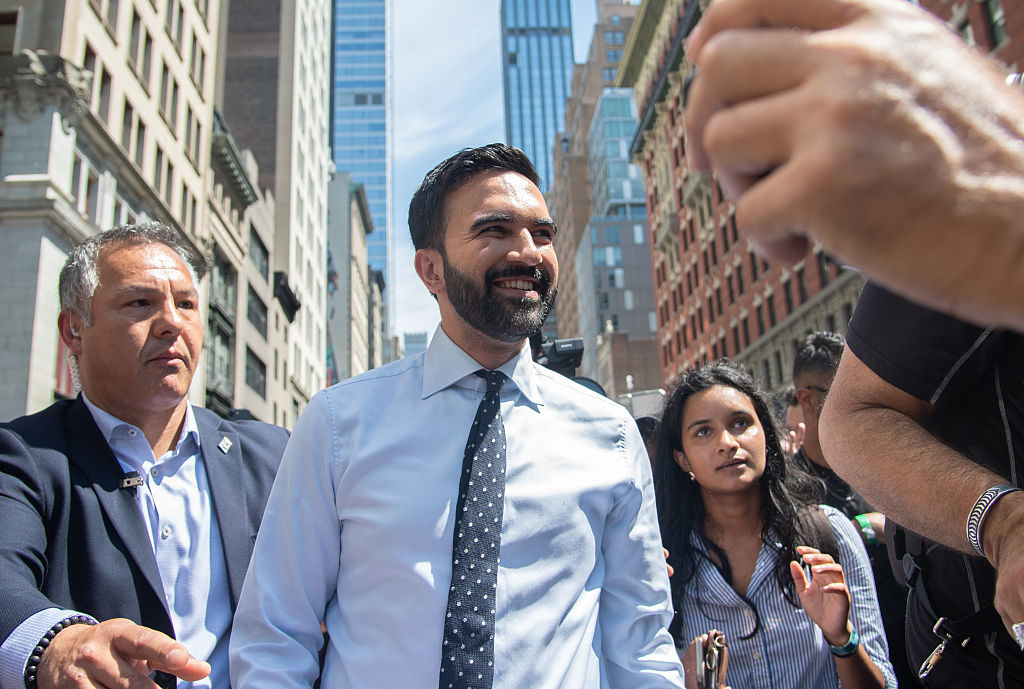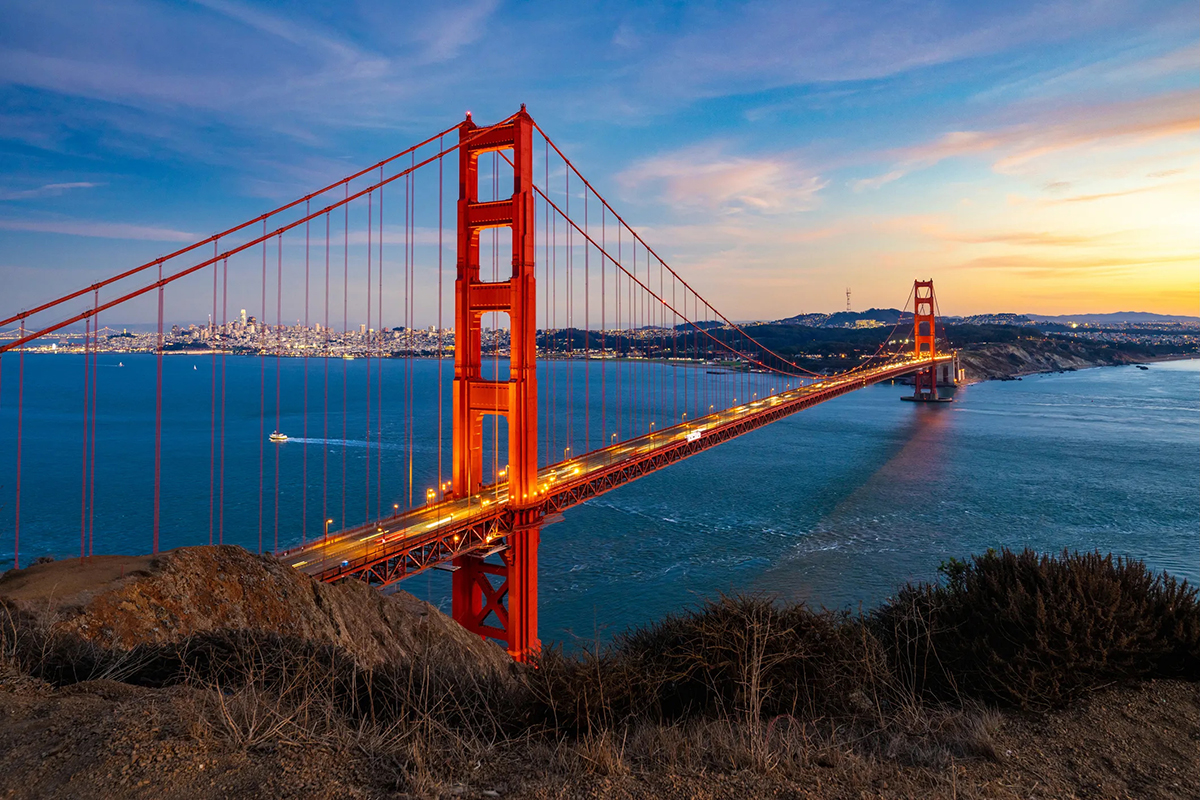The fog of the Trump wars is lifting, the road from COVID-19 rising before us, the outlines of the 21st-century American system emerging. Like the bankruptcy in Hemingway’s The Sun Also Rises, the change has happened ‘Gradually, then suddenly.’ The age of the democratic republic is over, the age of the American oligarchy beginning.
Oligarchy is the ‘rule of the oligos’, the few: the concentration of wealth and power in the hands of a self-sustaining elite. It sounds quaint, classical even, as though it couldn’t happen here because it already happened there. But it has, in fact, already happened here. Augustus Caesar, who made himself Rome’s first emperor in 27 BC, would recognize the symptoms of our American novelties. The cult of the founding fathers and the cult of entertainment. The elites divided by violent factionalism and united by naked venality. The decay of republican virtues. The widening of the wealth gap and the rise of the populares, the members of the ruling class who rebel in the name of values already overthrown. And then, when all seems lost, the rise of the imperial oligarchy that offers to restore law and order, but installs a different law and a new order.
Oligarchy happens here because it happens everywhere. It is a recurring reality, the precursor of mob democracy in Plato’s Republic; the alternative to liberal democracy in modern China, Russia and the European Union; the endless present in Arab and African states. The Chinese oligarchy is ‘market-Leninism’ under the ‘princelings’ of the party, from whose ranks Xi Jinping emerged to become a quasi-emperor. The Russian oligarchy is a post-communist, sub-czarist parody of democracy whose winners, the looters of the energy sector and the graduates of the spy services, first returned ‘oligarch’ to modern use in the Nineties. The European states were creating their oligarchy too in that decade, in the unaccountable imperial technocracy that is the European Union. The Nineties were not the decade of the triumph of liberal democracy. They were the decade when oligarchy, illiberal, liberal or semi-liberal, conquered the globe.
The first American oligarchy, the industrial oligarchy of the Gilded Age, was sneered at by the universities and the social elite, rejected by rural populists, and finally regulated by Washington, DC, where big-city progressives preferred corporatism to free markets.
Our oligarchy is also rejected by rural populists. Our big-city progressives are still corporatists: see the fusion of the healthcare, pharmaceutical and insurance industries under Barack Obama, and the Biden-Harris administration’s endorsement of one kind of Green New Deal or other. But that is as far as the resemblance goes.
Our oligarchs are the social elite. Our universities sell credentials for membership in a class system that has hardened into a chasm, with the wealthiest 20 percent of Americans on one side, and the desperate majority stranded on the other. The Democrats, heirs to the progressives who unpicked the oligarchy of the Gilded Age, are firmly on the side of Silicon Valley. Our corporate media, with the exception of Fox News and the Wall Street Journal, overwhelmingly support the Democrats. Social media, which has functionally replaced the town square and the local paper, is so confident of its progressive principles that it can silence the president of the United States.
Our political parties have fused with corporate and bureaucratic America into a donor-led, greed-driven ‘uniparty’. The manifest density of money and power has elicited mass revolts from the grassroots of both parties, but the DNC has defeated them all. First it defeated Bernie Sanders in 2016. Next it defeated the return of Sanders in 2020. Now it has defeated the revolt of the Republican grassroots by drawing away a small but crucial number of aspirational white suburbanites who voted for Trump in 2016. Were they repelled by four years of presidential tweeting, or intimidated by the demonization of Trump supporters as racists and losers? Aspirational suburbanites are the kind of people who used to be Republicans. They know how fast a fall from affluence can happen. They recognize where the social, financial and political power now lies.
Follow the money: in 2020, residents of ZIP codes with a median household income of at least $100,000 donated $486 million to Joe Biden’s campaign and $167 million to Donald Trump’s. The thousand or so ZIP codes where at least 65 percent of residents have graduated from college gave $478 million to Biden and $104 million to Trump. The ZIP codes in which Trump outraised Biden were those below the national median household income of $68,703, where Trump led by $53.4 million, and those without a preponderance of college graduates, where Trump led by nearly $40 million. Two nations, divided by a common understanding of what the oligarchy is, how it works, and who it works for.
The American oligarchy is still American. The ‘image of a free constitution’, Gibbon wrote of the imperial Rome that Augustus made, was ‘preserved with a decent reverence’, and the Roman Senate still appeared to ‘possess the sovereign authority’. The image of a liberal society survives in 21st-century America too. Private property and market forces are still revered in theory, and individualism, in the form of private license, has never been more sovereign. But democratic equality, the foundation of the American compact and the signature of American manners, has collapsed. The gap between the rich and the rest is more than economic. It is now civilizational, its mutual incomprehension and contempt a modern variation on the premodern gap between the medieval nobility and the peasants.
The American oligarchy is capitalism with American characteristics: always friendly, strategically diverse and gender-neutral, obsessed with race and blind to class, sentimental about Nature and enraptured by technology, and, above all, belligerently optimistic that it is honoring the unique promise of America. Until, that is, you get on the wrong side of it.
An oligarchy is a class, but it is also a political system, a set of economic and legal arrangements. The American oligarchy is a fusion of corporate industry, the financial sector, the permanent bureaucracy, media old and new, the elite universities and the popular representatives. The bureaucratic-political class regulates the economy by rationing opportunities for social mobility, cultivating client relationships with key sectors of industry and the voting public, and modifying the law to suit the rich.
Our society is now composed of three classes: the oligarchy, the middle and the underclass. The oligarchy also divides into three classes. We could call them the Plutocrats, the Aristocrats and the Meritocrats. Together they comprise only 20 percent of American households, but they hold more than 85 percent of the national wealth.
The Plutocrats are the notorious 0.1 Percent, the ones that everyone loathes and envies. The fantabulously wealthy can jet wherever they like. They have flat abs and multiple homes, they experiment with polygyny, and we suspect they know the truth about Jeffrey Epstein.
In a 2016 report, Emmanuel Saez and Gabriel Zucman found that the 160,000 households of the 0.1 Percent owned 22 percent of America’s wealth. This is nearly the same proportion as they held in 1929. The Plutocrats’ share of the cake shrank after the Crash, the Depression, the mid-century recovery of war production, and the fat decades of middle-class uplift. In the early Sixties, the 0.1 Percent held a paltry 10 percent of America’s wealth. By the nadir of 1978 they held only 7 percent of it. But since then, the 0.1 have worked hard, and its money has worked even harder. COVID-19 has been a disaster for small businesses and the ‘gig economy’, but it’s paid massive dividends to those who own stocks and shares. For the Plutocrats, the Roaring Twenties are here.
The oligarchs have excelled at being American. Last July, Forbes magazine released its annual rich list. Of the 10 wealthiest Americans in the Forbes 2020, only the 10th inherited big money: America’s richest woman, Alice Walton ($62.3 billion), the daughter of Walmart’s founder Sam Walton. Alice’s brothers Jim ($62.1 billion) and Rob ($61.8 billion) came in next: three Waltons makes one Bezos. But four of the top five richest Americans really did start businesses in garages, basements and dorm rooms: Jeff Bezos ($179 billion), Bill Gates ($111 billion), Mark Zuckerberg ($85 billion) and Larry Ellison ($72 billion). Two of the top 10 are immigrants: Elon Musk ($68 billion) and Sergey Brin ($65.7 billion). The only member of the top five to have been born with a social advantage from the pre-digital economy is the silver-spooned congressman’s son Warren Buffett ($73.5 billion).
So we should not mistake the Plutocrats for a hereditary aristocracy. Their richest members tend to be the winners of the now-defunct age of middle-class meritocracy. Jeff Bezos is the son of a schoolgirl and a bike-shop owner, and the stepson of a Cuban immigrant. He did not attend private schools, he worked at McDonald’s as a high schooler, and he won a place at Princeton on merit. By the end of 2020, he had become the first American to be worth more than $200 billion. Bravo, Jeff!
There is, however, a hereditary Aristocracy in America. As Michael Stewart described in the Atlantic in June 2018, most of America’s wealth is held by the rest of the top 10 percent. The ‘9.9 percent’ as Stewart calls them, are the ‘new aristocracy’. They are the experts: the programmers, scientists, researchers and lawyers who create and protect innovative ideas, the fund managers and investors of Wall Street, the political consultants who keep Washington DC in line, the politicians who put out their hands, the doctors and dentists who keep the rich looking good, the elite professoriat who credential the little oligarchs of the future, the upper echelons of corporate management, and the upper crust of the state bureaucracy.
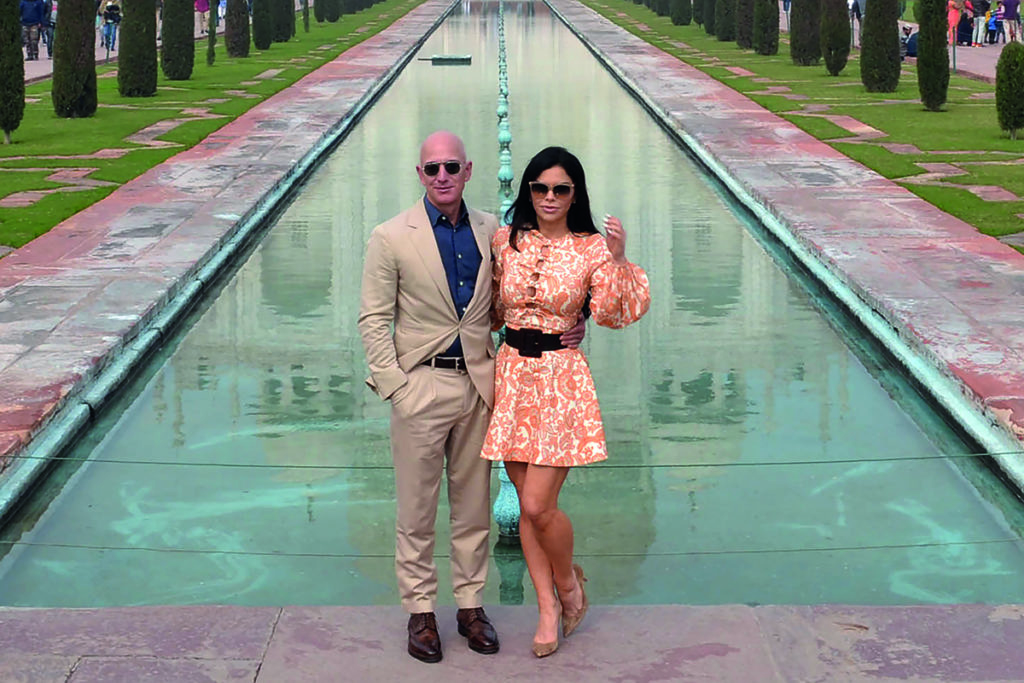
The Aristocrats’ share of the nation’s wealth, between 55 and 60 percent, has remained pretty stable since 1930. They have accumulated assets, not chronic debts. They have mastered the two historic arts of aristocratic endurance: marrying well and then transferring their assets down the generations. The outcome of assortative mating and wealth consolidation is that our Aristocrats, like the Old World aristocrats before them, are noticeably taller, thinner, healthier, whiter and better-educated than the other 90 percent. Unlike the Old World aristocrats, they claim to be middle class, or ‘upper-middle class’ if you pressure them, and they don’t bother with the noblesse oblige that justified the privileges of the old elites. They despise half of their fellow Americans as dim bigots. They are, however, angst-stricken about the fate of the polar bears.
As the Plutocrats cannot function without the Aristocrats, so the Aristocrats require the next 10 percent: the last of the Meritocrats. The Plutocrats and the Aristocrats are the upper class, whatever they say. The Meritocrats are the true American upper-middle class, living and dying by the sword of hard work and the market, and consequently fighting harder and harder against longer and longer odds. For the winners, the luxury of intergenerational wealth transfers; for the losers, a plunge into the pit of the middle-class precariat.
The true reactionaries, Karl Marx reckoned, were the artisans who would do anything to avoid a fall into the proletariat. Today, any decent parent will go to any length to save a child from becoming an Uber driver or a barista. The radicals who took to the streets last summer are the losers among the children of the Meritocrats. Loaded with student debt, a worthless four-year liberal arts degree and a nebulous sense of racial guilt, they are demanding to be heard before they lose the rest of their class privileges. The ever-rising cost of college, the overproduction of demi-educated graduates, the ever-rising cost of staying in the class position into which you were born, and the ever-increasing price of social ascent all mean that we will hear plenty more from them.
The survivors of the Meritocracy collude with the Aristocrats in a never-ending suburban balloon game. As Richard V. Reeves described in Dream Hoarders (2017), the upper-middle class are masters and mistresses of ‘opportunity hoarding’: putting a floor under their children’s futures by putting a ceiling on competition from below. The gatekeepers of the oligarchy guard their privileges through zoning laws, private schooling, extracurricular ‘enrichment’ of a variety that would have impressed the Bourbons, reserved places in elite colleges (the ‘legacy’ system, originally instituted to keep Jews out of the Ivy League) and giving each other’s children unpaid internships. The most effective mechanism of all, though, might be the two-parent family.
A range of status symbols allows us to track whether a family is safe in the Aristocracy, sweating it in the Meritocracy, or losing its footing entirely. Better a Tesla than a Prius, and better either than a Subaru Forester, the danger-signal that confirms the college professor’s downward mobility. The Ivy League for the Aristocracy, cash on the barrel; a second mortgage on a liberal arts college for the Meritocrats; a lucky break from the diversity lottery or a leveraged gradschool degree for the last-chancers. The second language that the oligarchy’s children fail to speak is Mandarin at the top, and French for the rest. Spanish is the language of nannies and gardeners.
The Meritocrats, constantly expected to prove their worth, still wear business suits. The Aristocracy dresses in a stealth-wealth parody of middle-class leisure: the hedge-fund manager exchanges the monogrammed fleece of shame for Lululemon athletic wear at the weekend. Only Plutocrats like Jack Dorsey of Twitter can afford to grow a homeless man’s beard.
Every oligarchy has two ideologies: an internal logic and an external justification. The American oligarchy runs on the logic of technocratic liberalism, but it distributes resources and rewards through the illogic of ‘diversity’. As race, not class, is the American agony, it is right that our nominal rulers should look like their electors. The Biden administration’s first draft raises this bait-and-switch to new heights: a government of Swamp veterans and tech lobbyists, but the first to match the sexual and racial diversity of the general population. As Gibbon would say, the image of democratic equality is preserved with a decent reverence.
The pressure of diversity laws falls heaviest, like all the other pressures of oligarchy, on the Meritocrats. Hard-working, hothousing groups like Jews, Indians and Chinese are statistically over-represented at the top end of the SAT scores. They don’t have the legacy boondoggle to fall back on, either. Their accumulated wealth and social capital, they’re told, are the rotten fruits of ‘white privilege’ — or, for the upstart Asians, the ill-gotten gains of ‘white-adjacency’. They are obliged to take one for the team. This is why the Jewish intake of the Ivy League has collapsed, and why the Asians took Harvard to court. This is also why the Asians lost: the oligarchy isn’t about to annul an effective pacification strategy.
The Aristocrats, as usual, have less trouble. The Pew Research Center finds that African Americans, who constitute about 12 percent of the general population, constitute only 1.9 percent of the richest 10 percent of households. Hispanics, who are 18 percent of the general population, are 2.4 percent of the 10 percent; Pew didn’t say how many of that 2.4 percent were white-adjacent. Other nonwhites, including Asians and the multiracial, comprise 35 percent of the general population, but only 8.8 percent of the top 10 percent. The Aristocracy is 86.9 percent white.
We can truthfully claim to have the most racially diverse government in American history — in the history of any society since the late Roman empire. Yet the ruling class is still dominated and governed by white men, and their economic and political power is greater than at any time in a century. Never before have Americans been so united by racial symbolism; never before have they been so divided by wealth; never before has education been so expensive and social mobility so slow. If you are born on the wrong side of the great divide, you will die there, and you will die considerably earlier, fatter and poorer than the winners.
Something must be done to placate the distress and rage of the losers. Instead of equal opportunity in the marketplace, the oligarchic state offers ‘equity’ — a finite resource, even if it springs from a bottomless and pure well of self-righteousness. Equity is not secured by hard work and private enterprise. It is distributed by the unelected, permanent bureaucracy according to collective, not individual, needs, and according to arbitrary criteria.
Hence the federal Advisory Committee on Immunization Practices (ACIP) recommends that the first recipients of the COVID-19 vaccine should not be the individuals most at risk, the elderly, but the non-white collective identities which have higher mortality rates than the white collective. This approach will undoubtedly extend high mortality rates among the elderly, regardless of color, and lead to a higher final toll. That doesn’t matter: the justification is explicitly non-medical.
ACIP attributes the higher mortality rate among African Americans not to higher rates of comorbidities such as diabetes, heart trouble and obesity, but to ‘systemic racism’. Thus health policy becomes an instrument of reparative or ‘racial justice’. Meanwhile no collective trusts the vaccine less than African Americans do: in January, nearly half of those polled said they intended to refuse the vaccine. In New York State, vaccines have to be thrown away, as distributing surplus stock to passing individuals of incorrect color would breach the laws of equity.
The distance between the moral schema of the bureaucracy and the social reality of its targets reflects the gap between the oligarchy and its subjects. They live in different worlds, and they live by different values. A middle-class democracy would have greater continuity between the governed and the governors. But the American middle class has been hammered for decades — and the automation of its upper echelons is imminent.
In Augustus’s lifetime Rome completed its descent from representative republic to imperial oligarchy. The decline had taken nearly a century. The taboo against political murder was breached in 133 BC with the killing of Tiberius Gracchus, the tribune of the plebs who tried to redistribute land to the poor. In 100 BC, followers of the populist Glaucia, the loser in the direct elections for Rome’s magistrates, violently interrupted the endorsement of the count and seized the Capitol. In the 60s BC, Cato the Younger invented the filibuster, and the legislature started to become unworkable.
In 49 BC, Julius Caesar led his troops across the Rubicon. As the civil wars worsened and the economy tanked, the Romans accepted Augustus’ authoritarian bargain. They went on to prove Benjamin Franklin wrong. Trading ‘essential Liberty to purchase a little temporary Safety’, and acquiring an emperor, they secured a kind of security that lasted for centuries, whether they deserved it or not. Managed decline, as the British later called it.
True, Augustus’s policies created an economic crisis for his heir Tiberius. In 33 AD, Rome suffered a credit crisis and the collapse of the property market. The causes included overspending on public works; low interest rates and the endemic violation of legal limits on credit; subsidizing property purchases by low-income groups such as retired soldiers; and a trade deficit caused by the Roman taste for cheap imports. Tiberius, the living backstop, refloated the banks with low-interest loans, the quantitative easing of his day. According to Tacitus, he had no choice: the credibility of the Senate and the ruling families was on the line. Like the American Senate in 2008, the Roman Senate ordered the indebted small fry to repay their loans. Meanwhile the imperial oligarchy strengthened its power and wealth.
The catastrophe of the COVID-19 pandemic has further widened and hardened the new class gap. Nearly 400,000 Americans have died. More than 160,000 small businesses have closed, and millions have lost their jobs in the greatest economic crisis since the Great Depression. Government, from federal to local levels has failed us at every stage of the pandemic. Yet the oligarchy is doing great. The Dow Jones has broken 30,000 for the first time. The Nasdaq has risen even faster. By December, America’s billionaires, who are estimated to number 614, had grown their net worth by a collective $931 billion.
By August 2019, the five largest publicly traded companies (Apple, Amazon, Alphabet, Microsoft and Facebook) constituted 20 percent of the stock market’s total value: a degree of concentration not seen in 70 years. Apple’s stock-market value had doubled to $2 trillion in less than six months. Jan Eeckhout, a Spanish economist, told the New York Times that ‘in 1929, Sears and A&P accounted for 3 percent of retail sales, a situation that stirred up concern in Congress and helped give rise to additional antitrust laws in 1936’. By August 2020, Walmart and Amazon jointly accounted for 15 percent of retail sales. If we didn’t cross the Rubicon in the bank bailouts of 2008 or the Affordable Care Act of 2010, we are crossing it now.
The electoral defeat of Donald Trump forestalls the passing of serious antitrust regulation until 2024 at the earliest. Trump’s refusal to accept Joe Biden’s victory and his incitement of a riot at the Capitol reduce and possibly even nullify the chances of the Republican party developing as Trumpism without Trump: an anti-oligarchic party of the besieged middle-class, law and order, and small businesses.
In October, Trump’s Justice Department issued an antitrust suit against Alphabet, Google’s parent company. Trump had promised further antitrust moves, and the removal of Section 230 protections from Big Tech. The Democrats accepted even more money from Silicon Valley for the 2020 campaign than they did for the 2016 campaign: $199 million, up from $163 million in 2016. Joe Biden suggests that Big Tech should regulate itself.
There is little chance that the Biden-Harris administration will launch a second Sherman Antitrust Act at the tech companies. There is a good chance that the administration will collude with Big Tech to censor and demonize the opposition. There is an even greater chance that the BidenHarris administration will use the crisis of the Covid recovery as an opportunity to hasten the advent of green corporatism. The outcome would be what Tocqueville called a ‘static state’, slowly growing and slowly declining.
Under the static state, the winners will get richer and the middle class will shrink faster. The losers will be more numerous and estranged, and their backlash against diversity policies will intensify. The oligarchy will harden its defenses and increase its demonization of dissent. The Democrats already have a domestic terrorism law on their to-do list, and it looks like we’ll need it. Political instability and mob violence will lead to further trades of liberty for security.
A republic, Plato noted, decays from within, not from invasion. Build the American Athens and, sooner or later, you will find yourself living in the American Rome. That was the consummation that the Founders wished devoutly to defer. They succeeded, until they didn’t. The Roman republic stood for about three centuries too, but the last of them was no picnic. America’s decline and fall could be considerably shorter — and sharper.
This article was originally published in The Spectator’s February 2021 US edition.



